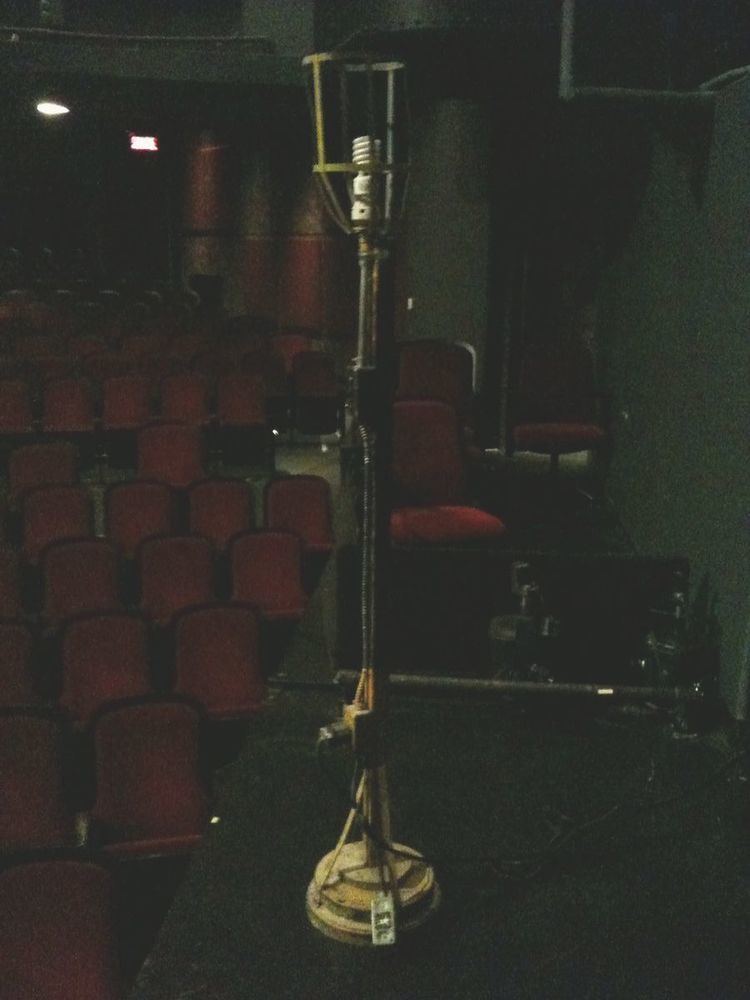 | ||
A ghost light is an electric light that is left energized on the stage of a theater when the theater is unoccupied and would otherwise be completely dark. It typically consists of an exposed incandescent bulb, CFL lamp, or LED lamp mounted in a wire cage on a portable light standard. It is usually placed near center stage. Ghost lights are also sometimes known as equity lights or equity lamps, possibly indicating their use was originally mandated by the Actors' Equity Association.
The practical use of a ghost light is mainly for safety. A ghost light enables one to navigate the theater to find the lighting control console and to avoid accidents such as falling into the orchestra pit and stepping on or tripping over set pieces. Aside from its obvious practical purpose, there are a number of superstitions associated with the origin and purpose of ghost lights.
Origin and superstitions
The superstitious have various justifications for the ghost light in relation to the supernatural. A popular theatrical superstition holds that every theater has a ghost, and some theaters have traditions to appease ghosts that reach far back into their history. For example, the Palace Theatre, London keeps two seats in their balcony permanently bolted open to provide seating for the theater ghosts. Similar superstitions hold that ghost lights provide opportunities for ghosts to perform onstage, thus appeasing them and preventing them from cursing the theater or sabotaging the set or production. This is also used to explain the traditional one day a week that theaters are closed.
